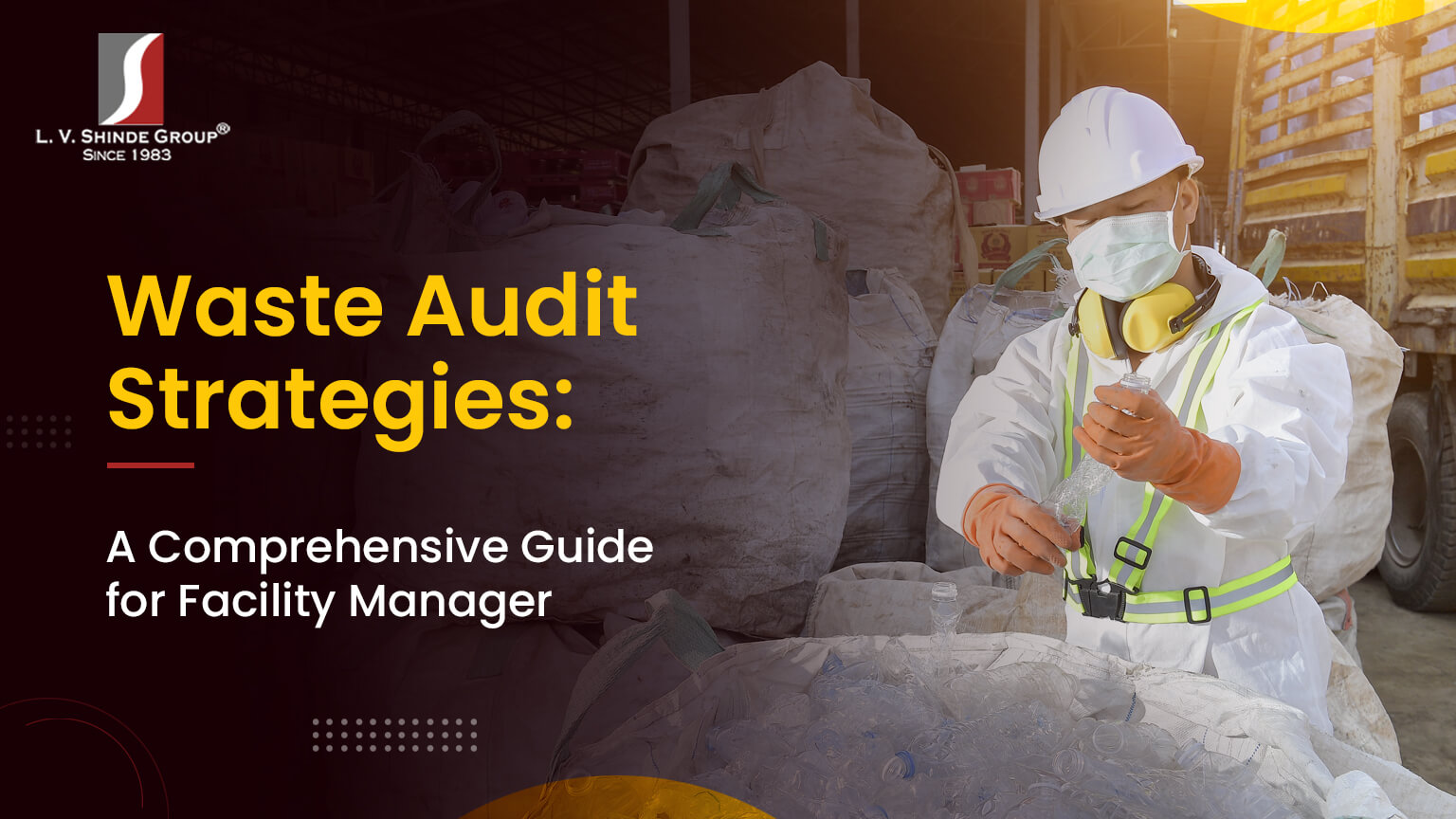Waste Audit Strategies: A Comprehensive Guide for Facility Manager
In today’s era of elevated environmental awareness, the role of facility managers in steering organisations towards sustainable practices has never been more crucial. Among the myriad tools at their disposal, waste audits stand out as powerful instruments for understanding and optimising waste management processes. This comprehensive guide dives into the dynamics of waste audits, offering facility managers insights into their significance, objectives, types, and effective execution.
What is a Waste Audit and Why Do One?
Waste audits serve as the investigative cornerstone in the journey towards sustainability. These crucial assessments involve a systematic examination of an organization’s waste stream, providing invaluable insights into its composition and volume. The process, outlined with precision below, aims to empower facility managers to make informed decisions that not only enhance operational efficiency but also contribute significantly to environmental conservation.
Understanding- Understanding Waste Composition:
By scrutinising the types and quantities of waste generated, facility managers gain a foundational understanding of their waste stream. This knowledge serves as a crucial baseline for targeted waste reduction efforts.
- Enhancing Recycling Opportunities:
The audit helps identify and analyse recyclable materials within the waste stream, providing a roadmap for optimizing recycling initiatives and minimizing environmental impact.
- Improving Source Segregation:
Through the examination of how waste is separated at its source, facility managers can develop strategies to enhance segregation practices, minimizing contamination and maximizing resource recovery.
- Quantifying Environmental Impact:
Determining the carbon footprint and environmental impact of the waste generated allows for the development of data-driven strategies to reduce the ecological footprint.
What are the Objectives of the Waste Audit?
Waste audits are not merely procedural exercises; they are strategic endeavours with multifaceted objectives that collectively contribute to a more sustainable waste management system. The objectives include:
- Identifying Waste Composition:
Defining the types and proportions of waste materials generated within the organization.
- Assessing Recycling Opportunities:
Analyzing the potential for increased recycling and optimizing recycling initiatives.
- Evaluating Source Segregation:
Understanding how waste is separated at its source to improve segregation practices.
- Quantifying Environmental Impact:
Determining the overall environmental impact and carbon footprint of the waste generated.
Types of Waste Audit
Waste audits come in various forms, each tailored to address specific organizational needs. The types include:
1. Bin Audit:
An examination of individual waste bins to understand the composition and volume of waste generated at specific locations.
2. Visual Audit:
An observational approach to waste-handling practices, visually assessing waste types without physically sorting through them.
3. Waste Characterization Audit:
A detailed analysis involving the sorting and weighing of waste materials to provide comprehensive data for strategic decision-making.
How to Conduct a Waste Audit?
The process of conducting a waste audit is systematic and involves several key steps, as outlined below:
- Preparation:
Define clear objectives, gather necessary tools, and communicate the audit plan to stakeholders.
- Sample Collection:
Collect representative samples of waste from various sources within the organization.
- Sorting and Weighing:
Physically sort waste into categories and weigh each category to determine proportions.
- Data Analysis:
Analyze the results to identify trends, opportunities, and areas for improvement in waste management practices.
10 Waste Audit Strategies for Conducting an Effective Waste Audit
Conducting an effective waste audit requires a strategic approach. Below are ten key strategies, each accompanied by subs and concise explanations to enhance understanding:
- Stakeholder Engagement:
Engage all stakeholders to ensure a comprehensive understanding of waste generation sources and practices.
- Establish Clear Goals:
Define specific objectives and goals for the waste audit to guide the process effectively.
- Utilize Technology:
Leverage digital tools and waste management software for accurate data collection and analysis.
- Regular Training Programs:
Conduct ongoing training programs to educate employees on effective waste segregation and reduction.
- Partner with Recycling Experts:
Collaborate with recycling specialists to optimize recycling initiatives based on audit findings.
- Continuous Monitoring:
Implement a continuous monitoring system to track changes in waste generation patterns over time.
- Employee Feedback Mechanism:
Establish a feedback mechanism to gather insights from employees on waste management practices.
- Pilot Programs for Improvement:
Initiate pilot programs based on audit results to test and refine waste reduction strategies.
- Publicize Success Stories:
Share success stories of waste reduction initiatives to motivate employees and stakeholders.
- Regular Review and Adaptation:
Regularly review waste management strategies, adapting them based on evolving business needs and environmental goals.
In adopting these strategies, facility managers can transform waste audits from routine procedures to dynamic processes that drive continuous improvement.
FAQs about Waste Audit Strategies
As facility managers explore the topics of waste audit strategies, several questions commonly arise.
Here are succinct responses to some frequently asked questions:
Q1. Can waste audit strategies help businesses save money on waste management costs?
Yes, by identifying opportunities for waste reduction and recycling, businesses can optimise waste management practices, leading to cost savings in the long run.
Q2. How long does it typically take to complete a waste audit?
The duration of a waste audit depends on factors such as the size of the facility and the complexity of the audit. However, it is generally completed within a few weeks.
Q3. How do you analyse and categorise waste during a waste audit?
Waste is analysed through sorting and categorization processes, where trained personnel categorise materials into distinct groups based on their composition.
Q4. How can a company improve waste segregation at the source?
Companies can improve waste segregation by implementing employee training programs, providing clear signage, and regularly communicating the importance of proper waste disposal.
Q5. What are some examples of successful waste reduction initiatives resulting from a waste audit?
Successful initiatives may include the implementation of recycling programs, reductions in single-use plastics, and optimisation of waste-to-energy conversion processes.
Conclusion
In conclusion, the journey through waste audit strategies reveals the transformative power of understanding and managing waste effectively. Facility managers armed with the knowledge gained from waste audits are better equipped to implement targeted strategies, fostering a culture of sustainability within their organisations.
Transform Your Facility’s Waste Audit Strategy with Supreme Facility Management
By embracing the wisdom gleaned from this guide, facility managers can elevate their waste audit strategies to unprecedented heights.
Supreme Facility Management stands as a beacon of expertise, offering tailored solutions that align with industry best practices. Partnering with Supreme Facility Management is not just a step; it’s a leap towards a sustainable and environmentally responsible future.


